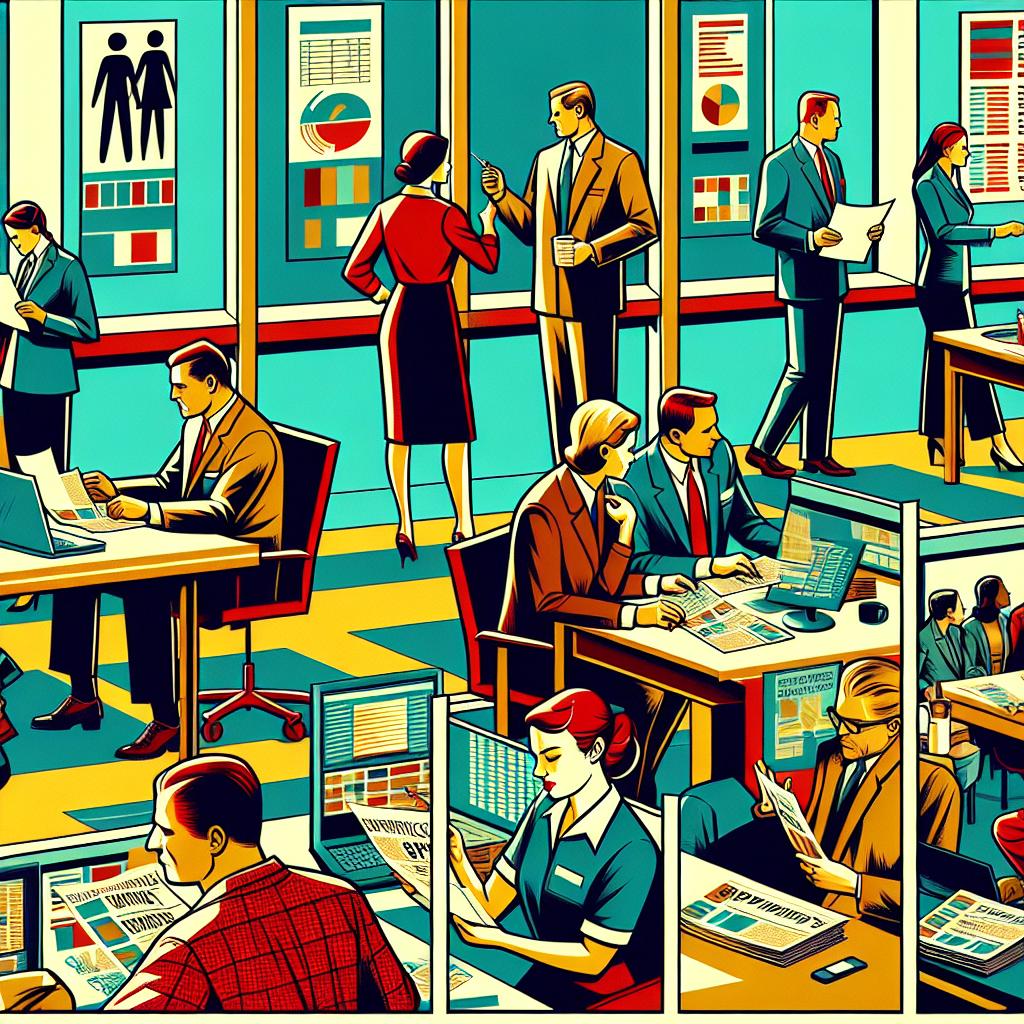The Push for Workforce Reskilling
As technological advancements change the labor landscape, both parties in Congress are uniting around a pressing necessity: workforce development programs aimed at reskilling workers for the digital economy. This effort is not driven purely by altruism; it’s a strategic response to the rapidly evolving marketplace, where traditional jobs are dissipating, and new skills are imperative for success.
The race to equip the workforce with vital digital skills has gathered momentum in recent years. As of 2023, job sectors involving AI, cybersecurity, and renewable energy are booming, with employers struggling to find candidates who are adequately prepared to fulfill these roles. Workforce development programs strive to meet this challenge by offering comprehensive training that focuses on forward-looking skills.
The Role of Community Colleges and Businesses
At the heart of these initiatives is a growing emphasis on partnerships between community colleges and businesses, which is integral to providing targeted training. Community colleges have traditionally served as a vital hub for educating local populations, and their flexibility enables them to adapt rapidly to the needs of the job market.
Through community-driven partnerships, students can access tailored training programs that link education directly to employment. For instance, local tech companies could collaborate with a community college to develop a specialized certificate program in programming languages that are currently in high demand. Such direct engagement ensures that graduates are more likely to find jobs and that businesses receive a qualified pipeline of potential employees.
Highlighting Successful Case Studies
Several successful initiatives across the country serve as beacons of hope in an uncertain economic landscape. One such program, TechForce Pipeline, has emerged in Seattle, where partnerships among tech giants, community colleges, and local nonprofits seek to equip workers with critical IT skills.
Another promising example can be found in Houston, Texas, where the local government and educational institutions banded together to create a training program focused on the needs of the growing energy sector. Participants undergo intensive training in solar technology, which aligns with the rising global emphasis on sustainable energy solutions.
This model seeks to not only bolster employment in the energy sector but also to support economic stability in communities that have depended on declining industries.
https://img-h0ster.s3.us-west-2.amazonaws.com/civicmag/376_content.jpg
Funding New Initiatives
With newfound political support, initiatives are being funded to assist workers in transitioning from declining industries to those poised for growth. Federal programs are increasingly allocating resources toward workforce development, recognizing that the skills gap must be addressed holistically.
For example, the Workforce Innovation and Opportunity Act (WIOA) has seen increased attention and funding, enabling communities to develop tailored workforce solutions. Local governments often partner with businesses to assess necessary skills and then design training programs that fit those requirements. These initiatives are crucial for workers at risk of being left behind in the race towards the new economy.
Challenges Ahead
Though progress has been made, significant challenges lie ahead. Not all regions will have equal access to these programs, leading to disparities that could exacerbate existing inequalities. Rural and underserved areas that have historically faced economic challenges often lack the same opportunities available in metropolitan centers.
Additionally, while many workers are keen to reskill, barriers such as affordability and access to resources can hinder progress. Community colleges and other training organizations must strive to make educational programs inclusive and available to all demographics, especially those hardest hit by displacement.
A Collaborative Future
Moving forward, the success of workforce development programs largely depends on continued collaboration among government entities, educational institutions, and corporations. Each stakeholder must recognize the urgent need for a well-trained workforce capable of navigating the complexities of today’s technological economy.
The experiences drawn from successful partnerships can serve as a blueprint for regions struggling to adapt. A focus on creating robust local collaborations that are responsive to the unique opportunities and challenges of their specific labor markets will serve to build prosperity for everyone involved.
In this digitally driven age, equipping people with skills and connecting them to relevant jobs is more than an individual concern; it is a collective obligation. By keeping the lines of communication open and proactively shaping educational offerings, society can transition toward a future where no worker is left behind.



